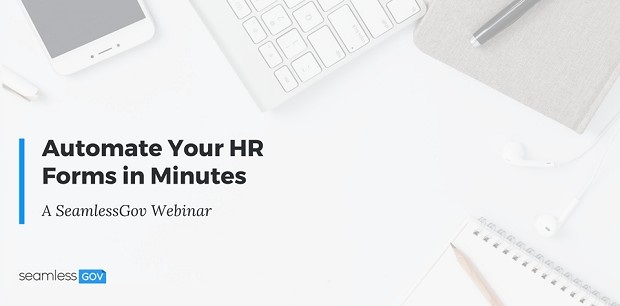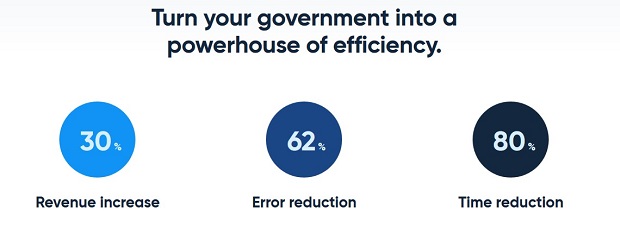* – This article has been archived and is no longer updated by our editorial team –
Below is our recent interview with Jonathon Ende, CEO and Co-Founder of SeamlessDocs:

Q: What’s the main problem that SeamlessDocs is solving?
A: SeamlessDocs is solving the age-old problem of paperwork. Despite major digital advances in the private sector, most of the public sector still uses paper-based forms and applications to collect data. Citizens are filling out forms manually and faxing them in or physically delivering them to government offices, only for government staff to manually enter the form data into databases and store away the forms in filing cabinets.
We are transforming the way governments and constituents interact. By streamlining and automating these formerly manual processes, SeamlessDocs is solving the paper problem for the public sector.
 Recommended: EnterWorks Delivers Multi-Domain Master Data Management Solutions To B2B And B2C Companies
Recommended: EnterWorks Delivers Multi-Domain Master Data Management Solutions To B2B And B2C Companies
Q: Can you describe some of the key features and benefits of your product?
A: The SeamlessDocs platform has three key components –– the Form Solution, the Service Center, and the Government Relationship Manager (GRM®) –– each with a unique set of features and benefits.
The cornerstone of our form solution, the SeamlessDoc, is built on a patent pending algorithm that can quickly transform any PDF or Microsoft Word form into a cloud-based version with eSignatures, payments, attachments, and workflow. This means that employees in any Department, regardless of their technical savvy, can drag an existing PDF or Word doc into the platform, and create an online service in seconds.
Our web form builder is also a powerful tool for creating online forms from scratch and delivering them in accessible ways. With hundreds of drag-and-drop fields, building forms has never been easier. Additionally, all of our web forms are ADA & 508 compliant, providing users with disabilities equal access to the content and functionality of online forms.
The Service Center is a centralized platform that showcases all forms and resources to citizens and staff. Through the Service Center, governments can create custom portals and employee dashboards, with permission based access points. Think of it as the TurboTax of government forms –– the Service Center’s greatest benefit is that it guides the end user through a form process, letting them know how long it will take to complete it, and what other materials they might need in order to submit the form. The Service Center empowers governments to provide their staff and citizens with the tools to guide themselves through a form process.
The Government Relationship Manager (GRM®) is the CRM that we build with government, for government. When we developed the GRM®, we wanted to create a platform that not only allowed for streamlined collaboration, easy communication, and automation of processing, but put the Relationship back in Government. The GRM® was our response to the classic scenario of a citizen spending hours on the phone to find out a simple status update. Now, governments have a tool to increase transparency, save citizens and staff thousands of hours of time, and most importantly leave all the participants smiling.
Q: Can you give an example of how form automation can improve government services?
A: Automation helps government operate more efficiently on many levels. On the surface, automation eliminates the need for governments to manually process paper forms. Previously, citizens had to show up at the Town Hall to fill out forms, which were then being physically carried to the appropriate office, sometimes even in a different building, and then stacked onto desks. SeamlessDocs digitizes government forms so that as soon as a citizen submits a form, it is automatically routed to the correct Department with built in workflow and notification rules. We can even make sure the form is completed properly with data validation and required fields, meaning no more incomplete, incorrect forms that could not be processed in the past.
When government processes are automated, government officials have more time to serve us in meaningful ways. We look forward to a future where costs are shifted away from printing, faxing, data entry, and filing cabinets, and where time is no longer wasted on repetitive administrative tasks. Our taxes should be helping governments do more with less, enabling them to perform their public duties more effectively. We believe that Government is Beautiful and we are determined to work with government to build its future.
 Recommended: Law Firm Munck Wilson Mandala Handles Trials, And Technology Matters In Courtrooms Around The World
Recommended: Law Firm Munck Wilson Mandala Handles Trials, And Technology Matters In Courtrooms Around The World
Q: How do you plan to use the new capital raised in this round?
A: We will use the new capital raised in this round to solidify our product and grow our team. Our top priority is to solidify our technological infrastructure and expand the functionality of our platform, while maintaining the highest levels of security and exceeding accessibility standards. Additionally, while we are already working with hundreds of local governments, we want to push into state markets. This ambitious growth plan means we are hiring across all departments: Solutions, Customer Success, Business Development, Marketing, and Engineering, to name a few! We are looking for talented, passionate individuals who are eager to transform the way government works. Ultimately, we hope to build a team that empowers all levels of government to offer Seamless solutions to their staff and citizens.
Q: What is your long-term vision for SeamlessDocs, and what developments do you anticipate in the govtech industry over the next ten years?
A: We started off working with small local governments, steadily grew to incorporate larger cities and counties, and are now partnering with state agencies. SeamlessDocs recently became available on the NASPO ValuePoint Contract, a cooperative contract that states rely on to procure software solutions. This is a true watershed moment for us, signaling our push into full state markets.
When we think of the future of government, there is no doubt that printers, checkbooks and a roll of stamps will eventually become obsolete. In 2018 and beyond, we will be interacting with government from our computers, tablets, and phones. We are excited to continue championing paperless processes on the state and local level, and within ten years, we hope to automate paper-based processes on the federal level as well.

